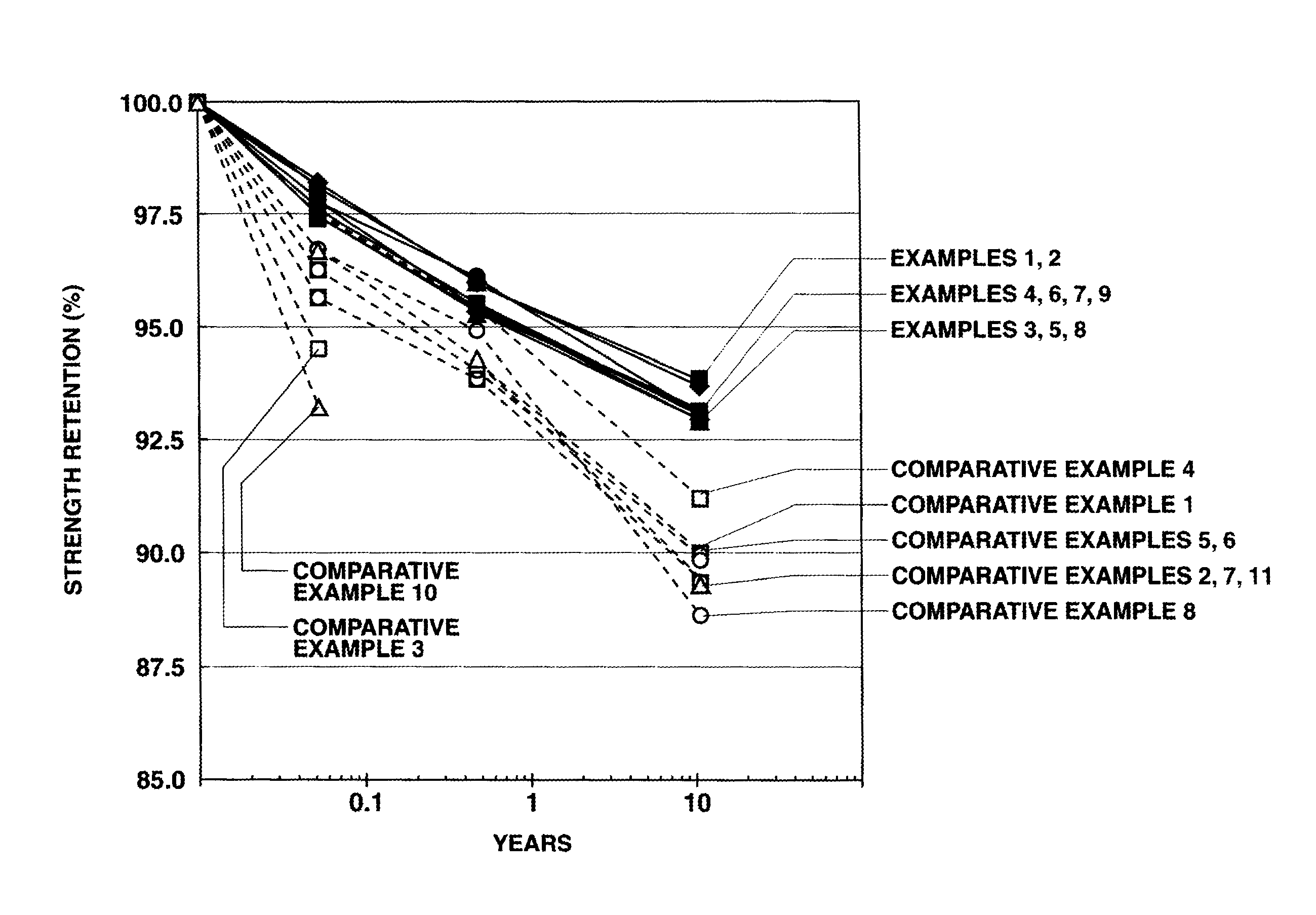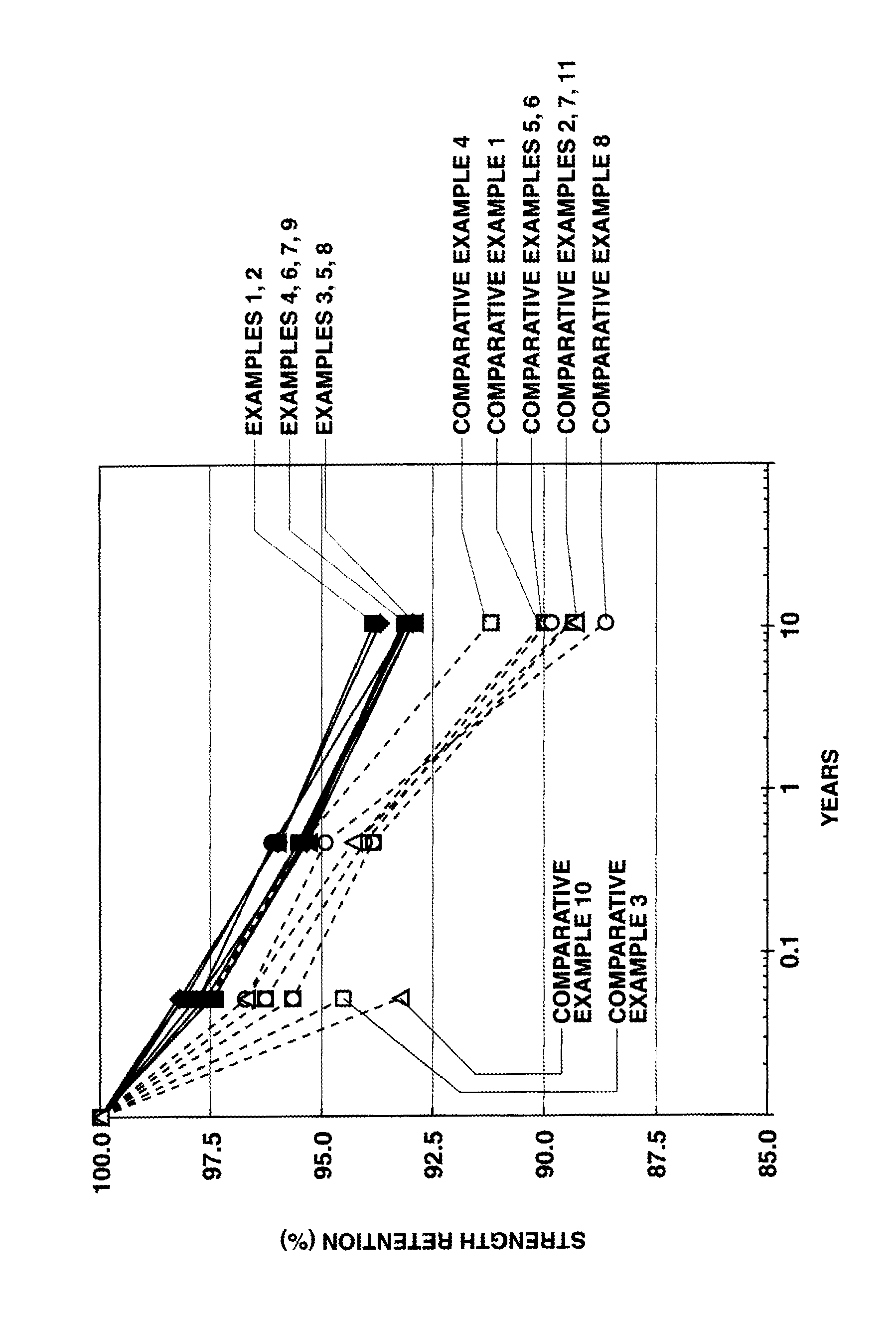Fuel cell separator
a fuel cell separator and separator technology, applied in the direction of basic electric elements, electrical equipment, materials and papermaking, etc., can solve the problems of unsuitable mass production methods, long composition time, and difficult heat resistance of the separator to hot water, so as to maintain the necessary strength properties, excellent heat resistance to hot water, and the effect of increasing the number o
- Summary
- Abstract
- Description
- Claims
- Application Information
AI Technical Summary
Benefits of technology
Problems solved by technology
Method used
Image
Examples
example 1
[0074]One hundred parts by weight of flake graphite powder (average particle size: 30 μm at d50 in particle size distribution), a binder component resin composed of 18.3 parts by weight of o-cresol novolak epoxy resin (epoxy equivalent weight, 199 g / eq; ICI viscosity, 0.29 Pa·s; hydrolyzable chlorine concentration, 370 ppm), 9.6 parts by weight of novolak phenolic resin (hydroxyl equivalent weight, 103 g / eq; ICI viscosity, 0.22 Pa·s) and 0.19 part by weight of 2-phenylimidazole, and 0.5 part by weight of carnauba wax as the internal mold release agent were charged into a Henschel mixer and mixed together at 500 rpm for 3 minutes to prepare a fuel cell separator composition.
[0075]The resulting composition was charged into a 200 mm×200 mm mold for manufacturing a fuel cell separator and compression-molded at a mold temperature of 185·C and a molding pressure of 30 MPa for a molding time of 30 seconds, thereby giving a fuel cell separator.
example 2
[0076]Aside from replacing the o-cresol novolak epoxy resin used in Example 1 with 18.1 parts by weight of another o-cresol novolak epoxy resin (epoxy equivalent weight, 193 g / eq; ICI viscosity, 0.17 Pa·s; hydrolyzable chlorine concentration, 390 ppm) and setting the amount of novolak phenolic resin to 9.8 parts by weight, a fuel cell separator composition was prepared and compression-molded under the same conditions as in Example 1 to give a fuel cell separator.
example 3
[0077]Aside from replacing the o-cresol novolak epoxy resin used in Example 1 with 18.5 parts by weight of another o-cresol novolak epoxy resin (epoxy equivalent weight, 206 g / eq; ICI viscosity, 0.73 Pa·s; hydrolyzable chlorine concentration, 390 ppm) and setting the amount of novolak phenolic resin to 9.3 parts by weight, a fuel cell separator composition was prepared and compression-molded under the same conditions as in Example 1 to give a fuel cell separator.
PUM
| Property | Measurement | Unit |
|---|---|---|
| glass transition point | aaaaa | aaaaa |
| glass transition point | aaaaa | aaaaa |
| ICI viscosity | aaaaa | aaaaa |
Abstract
Description
Claims
Application Information
 Login to View More
Login to View More - R&D
- Intellectual Property
- Life Sciences
- Materials
- Tech Scout
- Unparalleled Data Quality
- Higher Quality Content
- 60% Fewer Hallucinations
Browse by: Latest US Patents, China's latest patents, Technical Efficacy Thesaurus, Application Domain, Technology Topic, Popular Technical Reports.
© 2025 PatSnap. All rights reserved.Legal|Privacy policy|Modern Slavery Act Transparency Statement|Sitemap|About US| Contact US: help@patsnap.com


